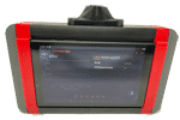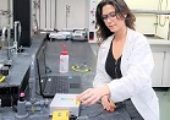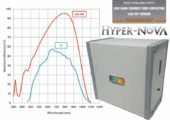T Hülsen, K Hsieh, DJ Batstone – Water Research, 2019
Abstract
Biological removal of organics, nitrogen and from saline wastewaters is adversely impacted by high salinity, which can be a major concern for treatment of industrial or domestic saline wastewater. In anaerobic treatment systems, sulfidogensis, especially when treating sulfate-rich saline wastewaters (e.g. seawater has 930 mgSO4-S L−1, or 2800 mg L−1 as SO42−) can cause additional biological, operational, and safety issues, due to H2S toxicity. Here, the use of anaerobic purple phototrophic bacteria (PPB) is tested as mediator to treat high salinity domestic wastewater (NaCl), and marine wastewater (Red Sea Salt – high sulfate, potassium, etc.) in a continuous anaerobic infra-red photo bioreactor, operated over 372d. Saline adapted PPB simultaneously removed COD, nitrogen and phosphorus with biomass yields of 0.8 gCOD gCOD−1. Batch activity tests found a broad optimum peak for saline adapted PPB between 30 and 70 mS cm−1, and 50% reduced activity at 140 mS cm−1 (3.5x seawater). For marine wastewater, high sulfate influent concentrations (770 mgSO4-S L−1) did not result in substantial H2S production (<1.6 mgS L−1) over 80 d. When irradiation was removed, sulfide rapidly rose to >90 mgS L−1 and the process failed. The results indicate rapid adaptation to high-salt conditions (both NaCl and marine), and the capacity for PPB to form a combined wastewater treatment/resource recovery process, particularly for salty industrial wastewater.
… 1998). Temperature and pH were measured using an Oakton pH 11 Series meter (Vernon Hill, IL, USA). Illuminance (Wm −2 ) and wavelength profile were measured with a UV-VIS & NIR light sensor (stellarnet blue-wave …





